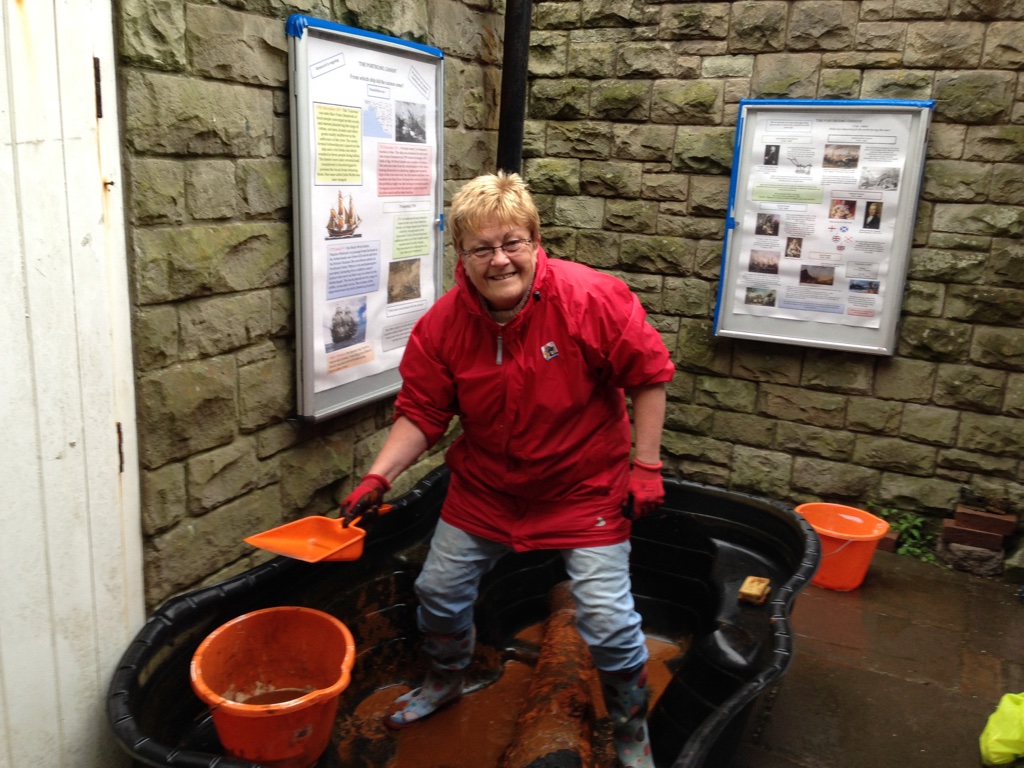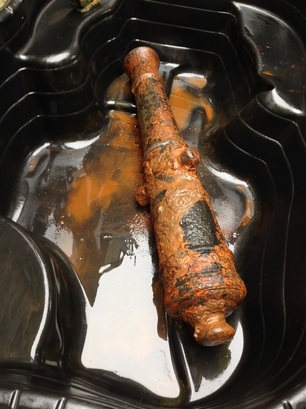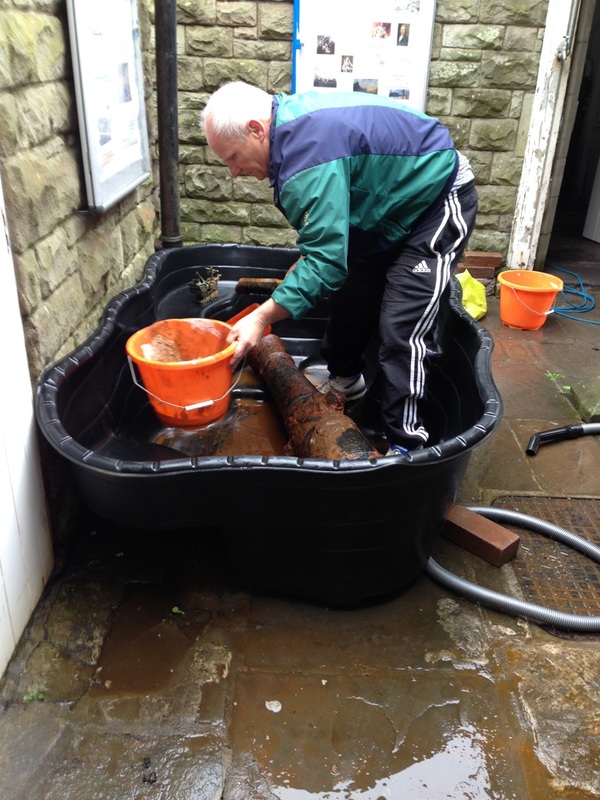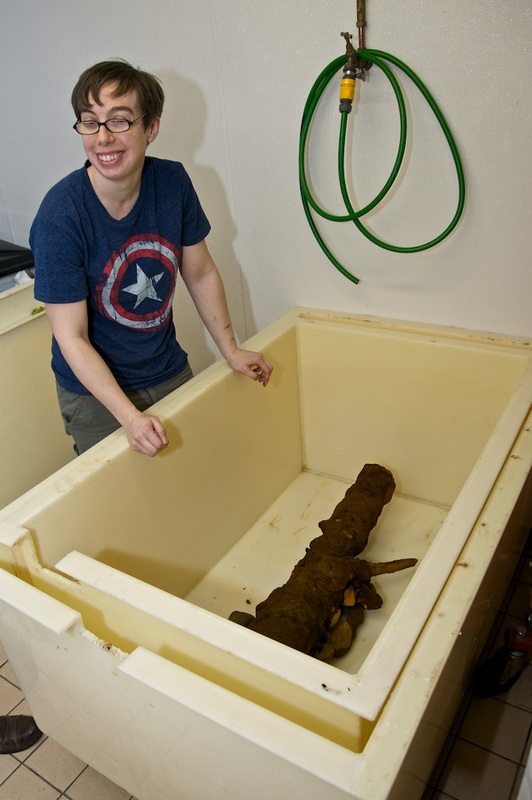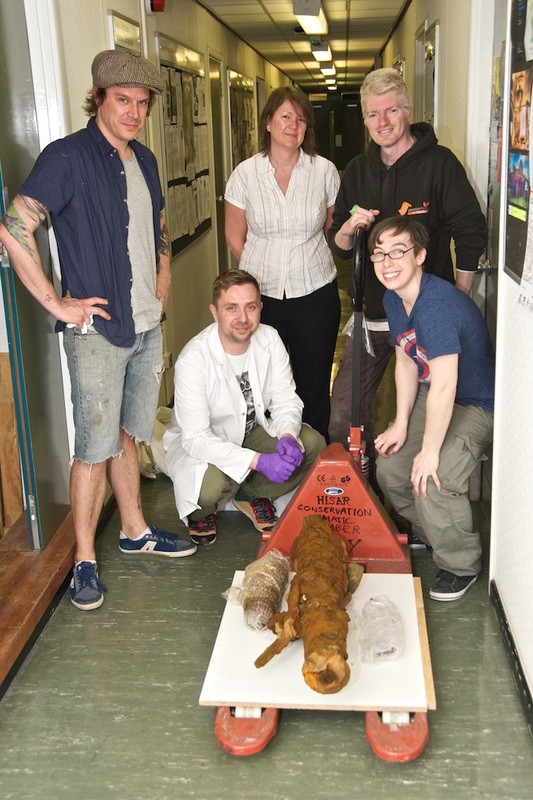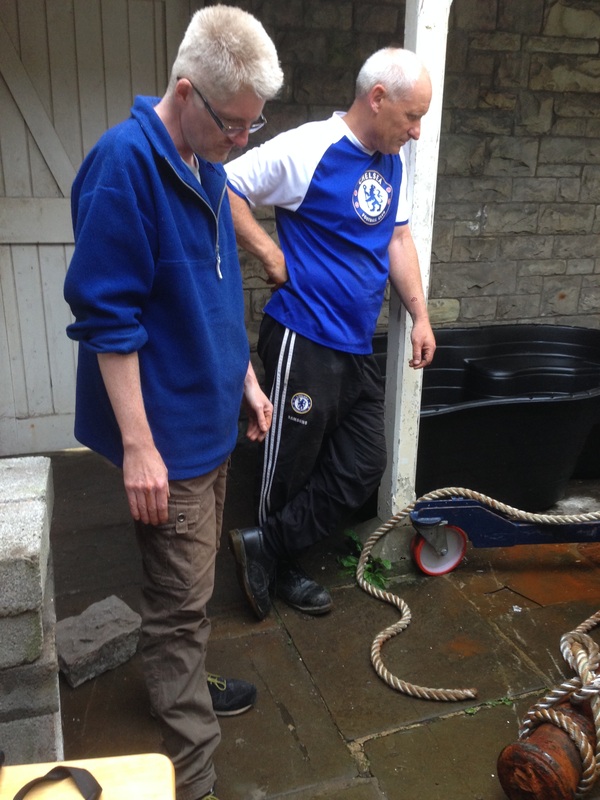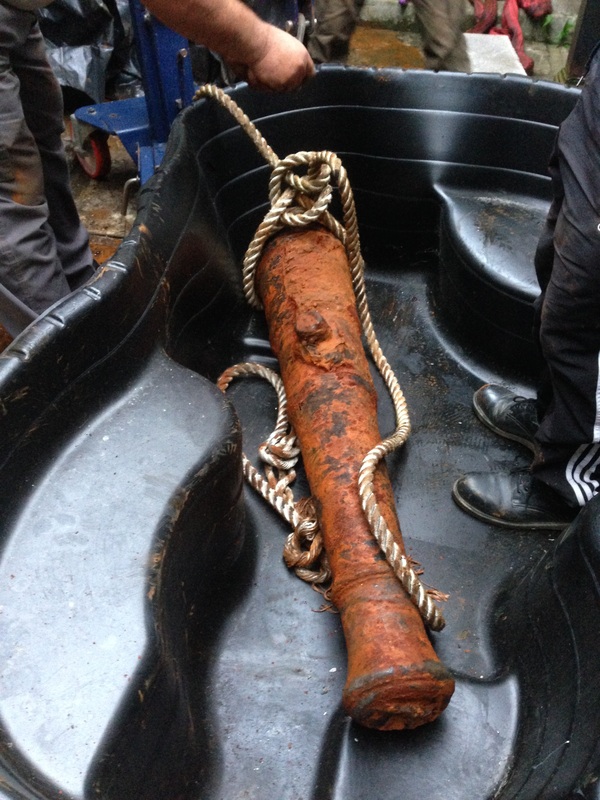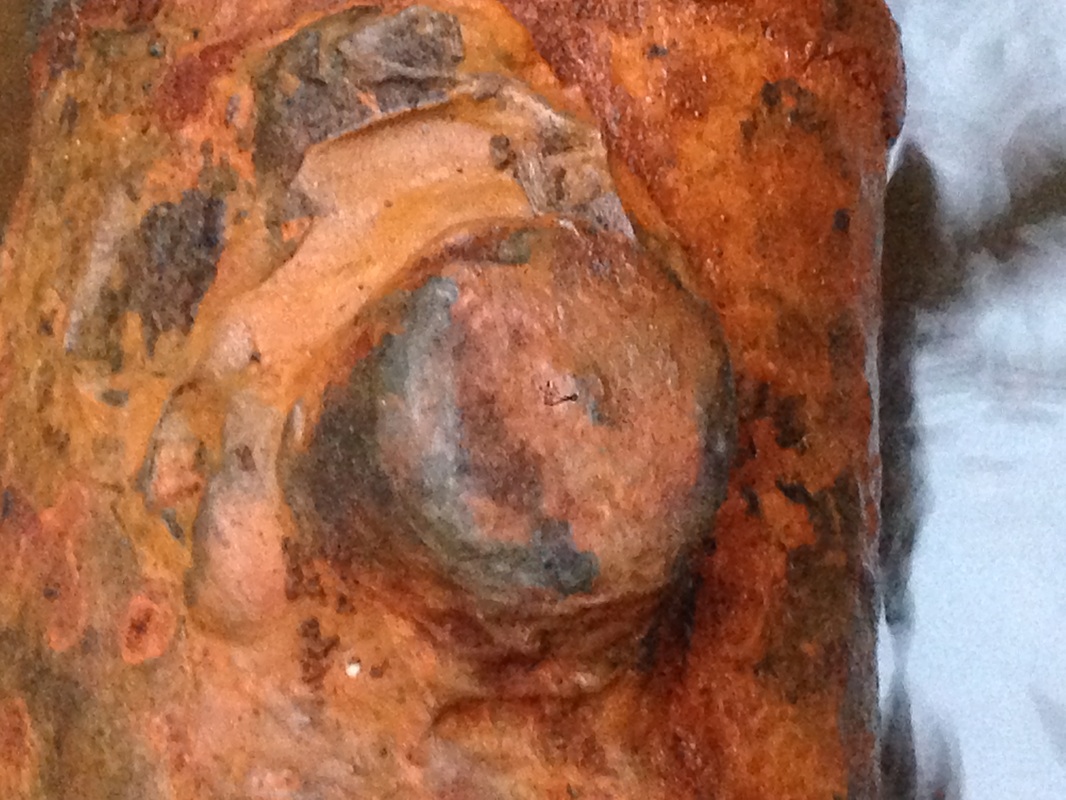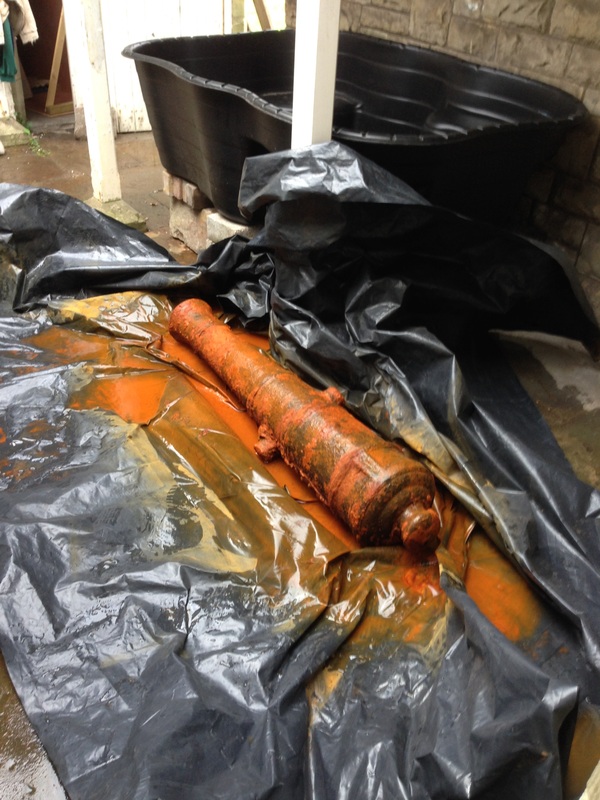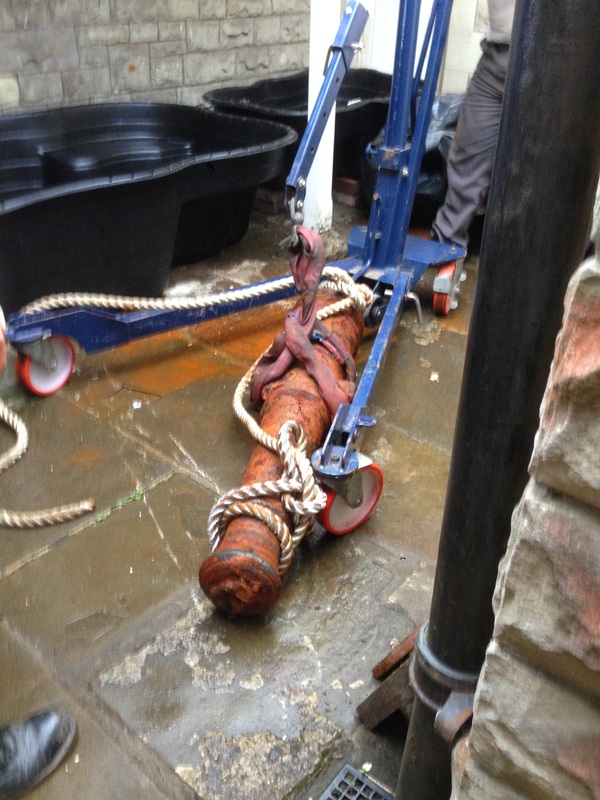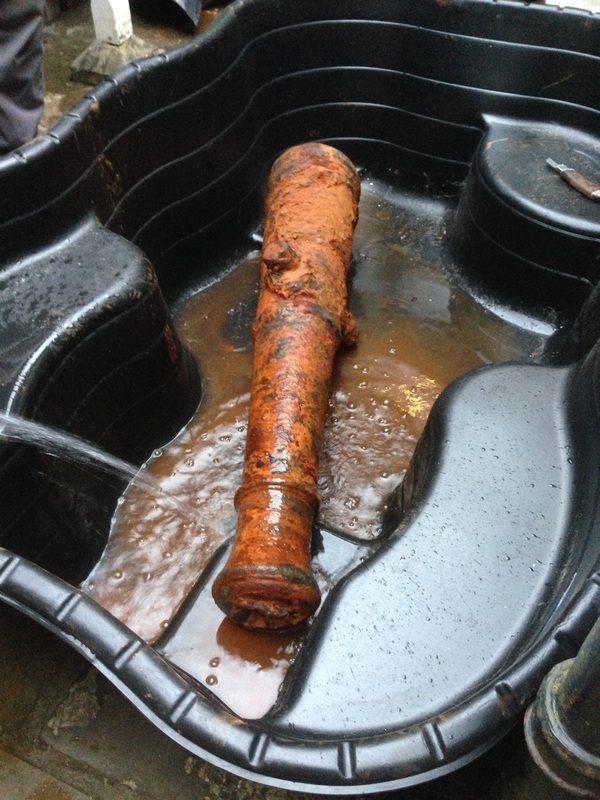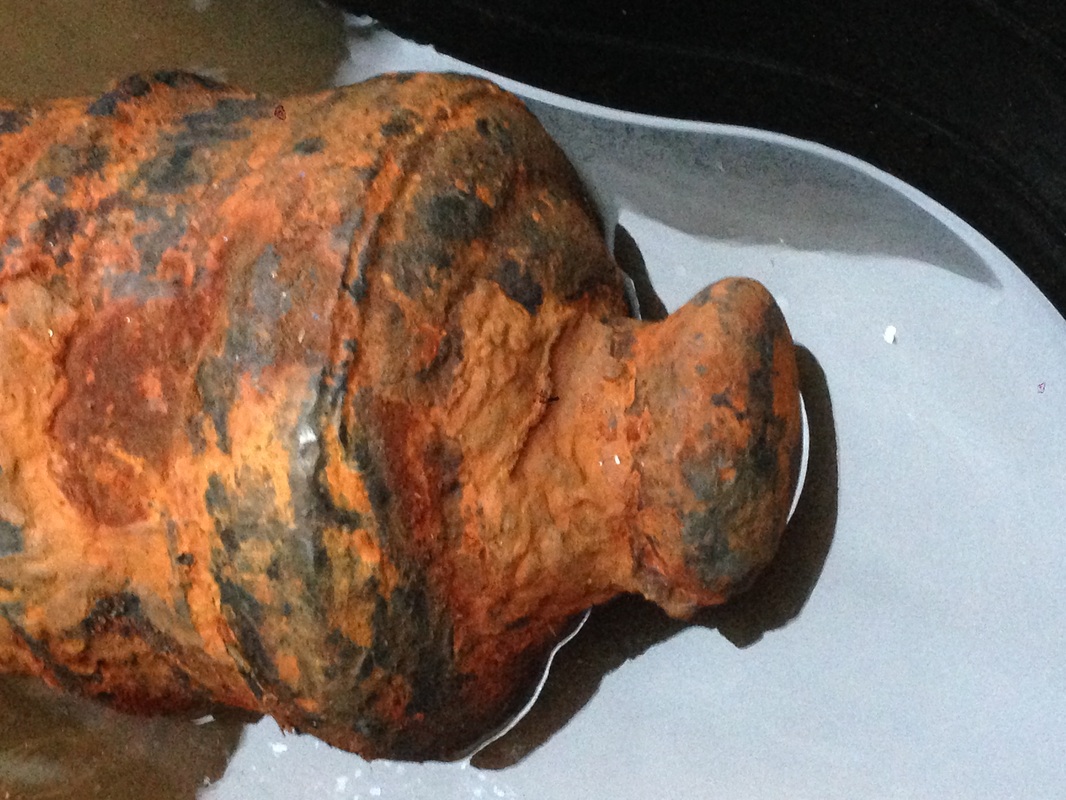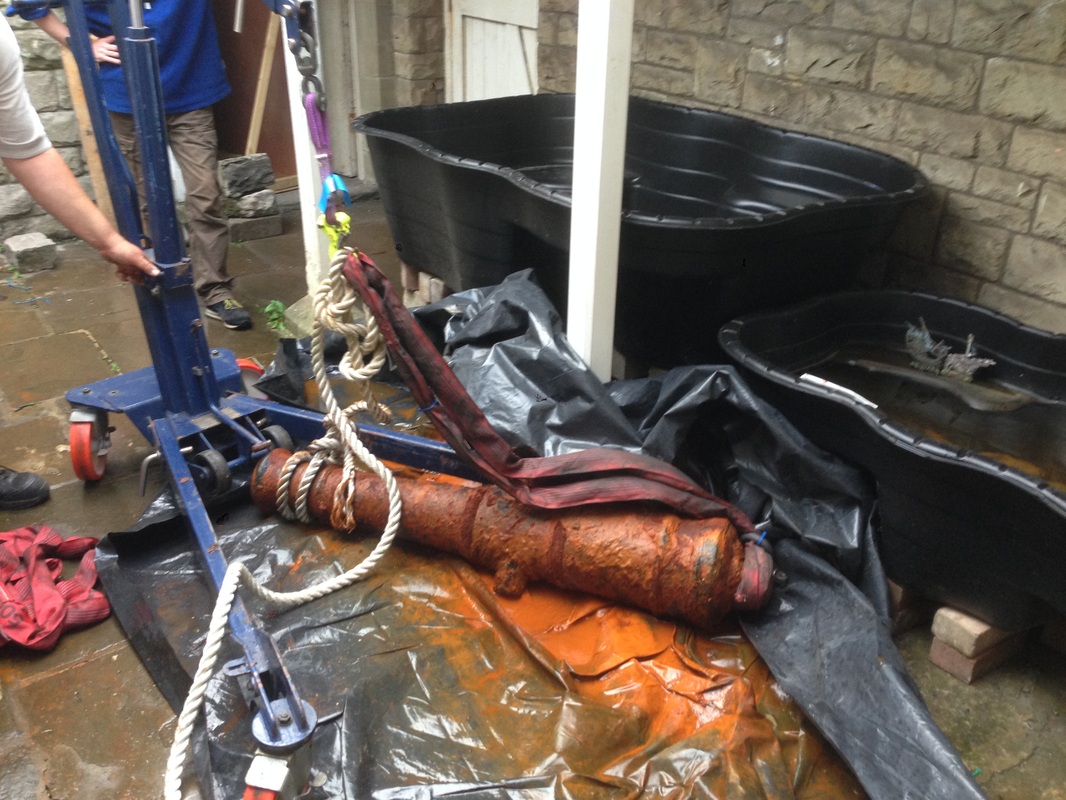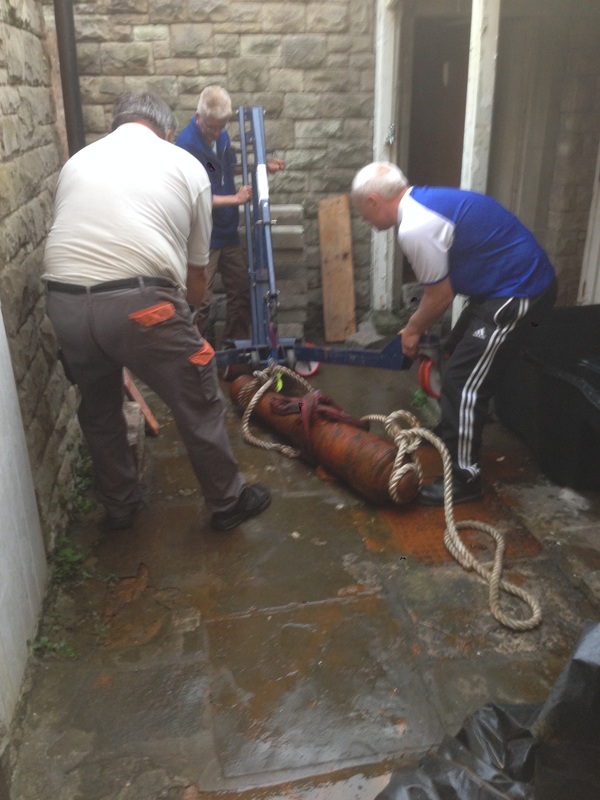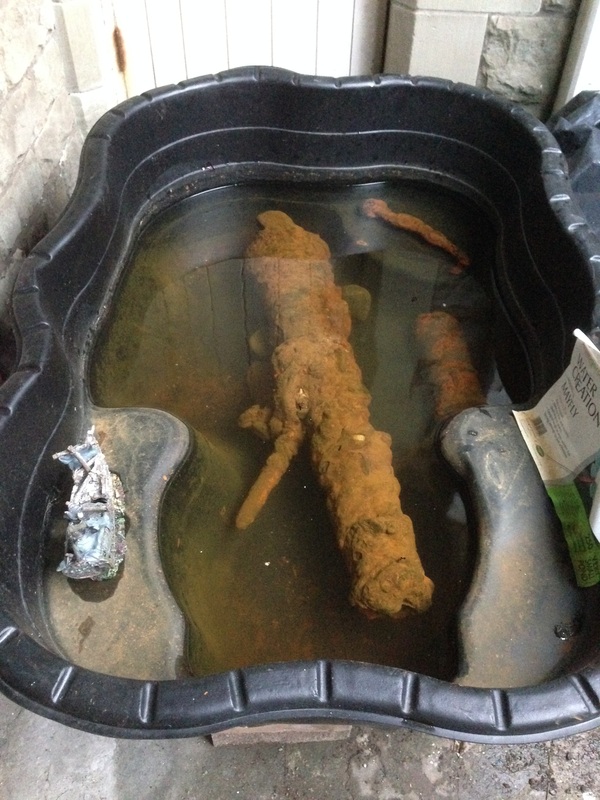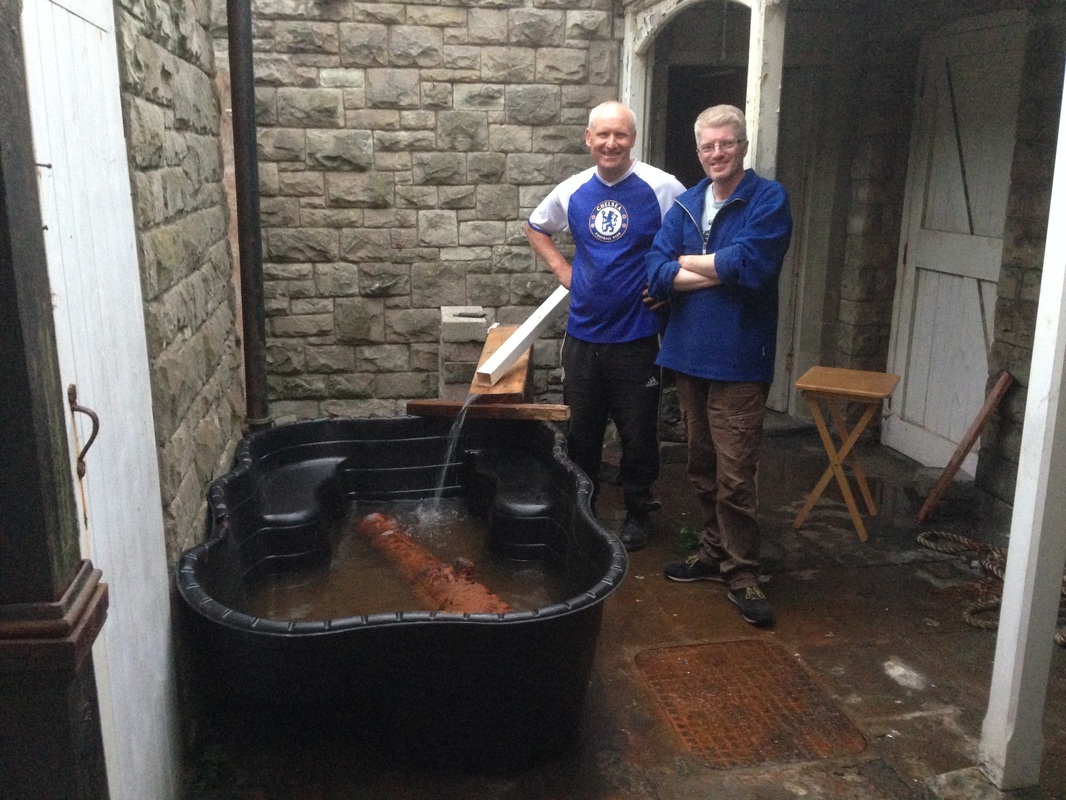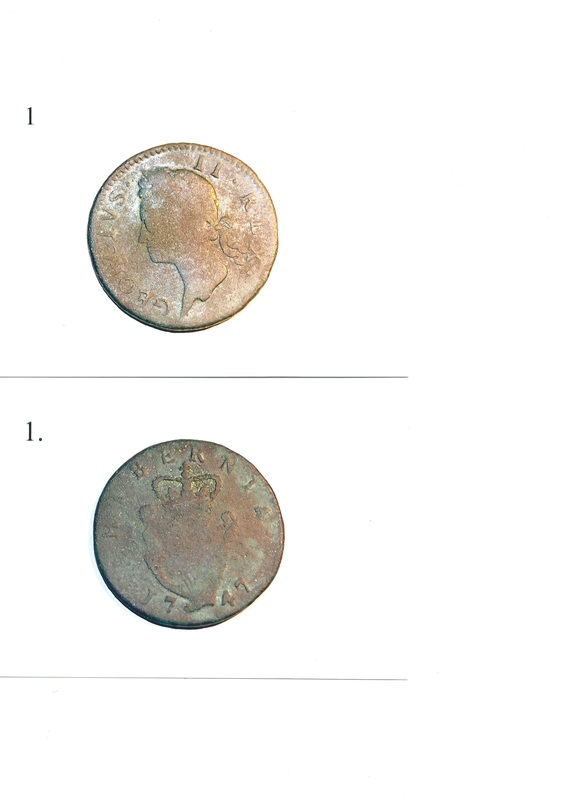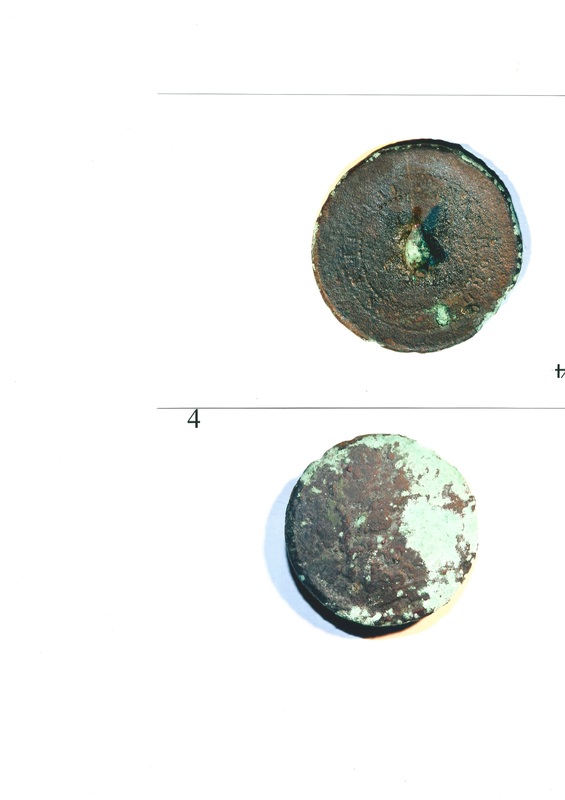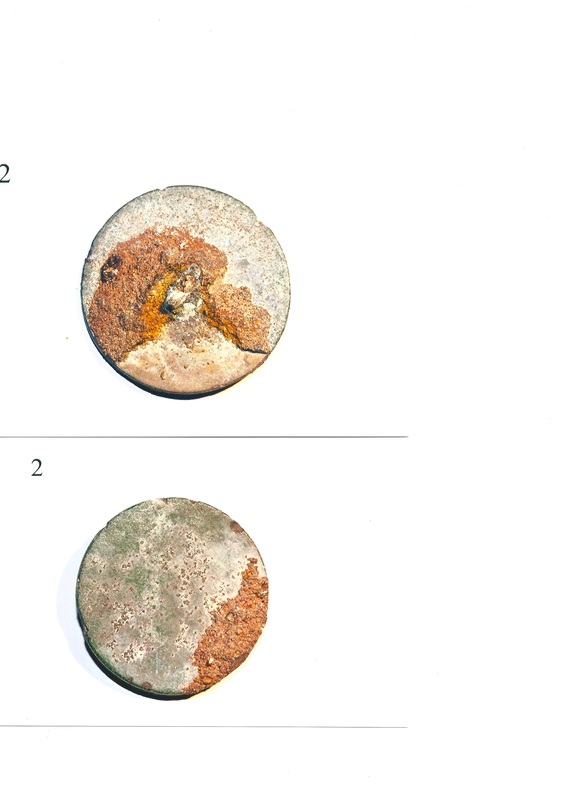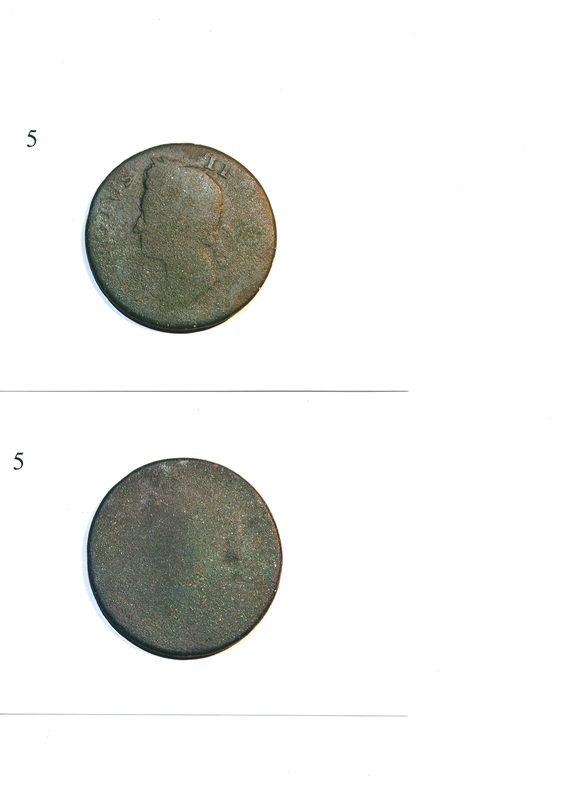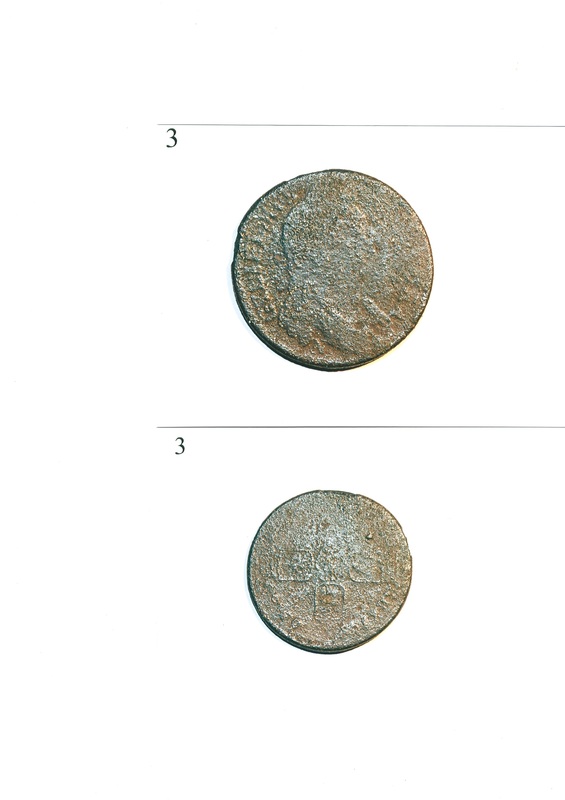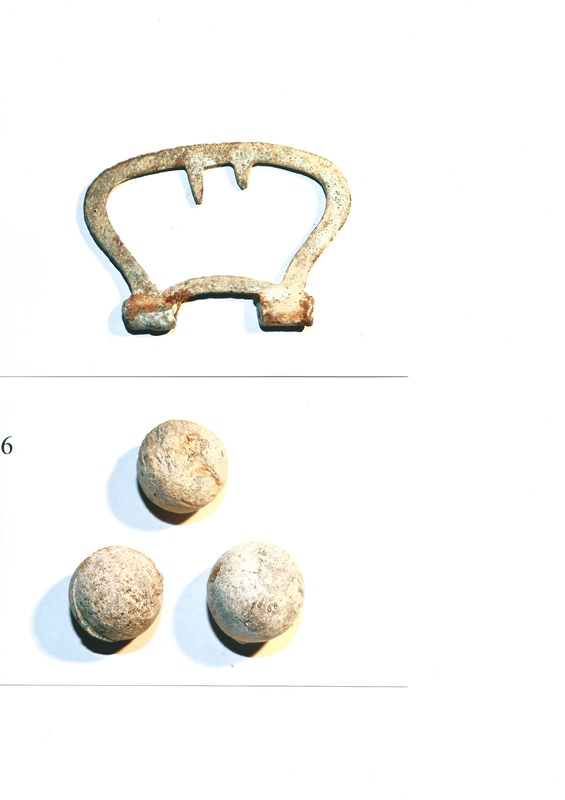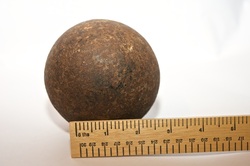The Large Cannon has been washed.
The little cannon has been moved to Cardiff University's Archaeological Department for restoration.When completed, it will return home to Porthcawl.
The big cannon has been moved.
Martin, Paul and Ross spent Thursday night 21st August wrestling with half a ton of cannon. It was touch and go at times but eventually they completed the task. The large cannon now has a better container to sit in; one which will make it easier for Martin to work on, with various preservation techniques.
|
1. The cannon has been released from its old home, in the polythene wrap, and is being attached to a portable hydraulic lift.
What can be more simple? |
Artefacts found near the cannon site.
|
The artefacts above were found by Mr Peter Hughes.(see previous article)
1,2,3 and 5 are 18th century coins . 4 is a military button. 6 shows a buckle and 3 gun shot. Left - a 9lb cannon ball found in 2005 near the cannon site, by Mr J Blundell. All items are now under research and conservation procedures. They will be returned to the museum on completion. |
Immediate plans - 1. The 2 cannon are to be placed in plastic tanks. 2. Three display boards are to be placed above the cannon to help explain their recovery, suggested period of origin and plans for the future.
It is hoped that the immediate plans will be completed by early August this year.
The research and conservation is being done under the guidance of Martin Little (Museum Archaeologist.)
Photographs of the artefacts by David Swidenbank.
It is hoped that the immediate plans will be completed by early August this year.
The research and conservation is being done under the guidance of Martin Little (Museum Archaeologist.)
Photographs of the artefacts by David Swidenbank.
